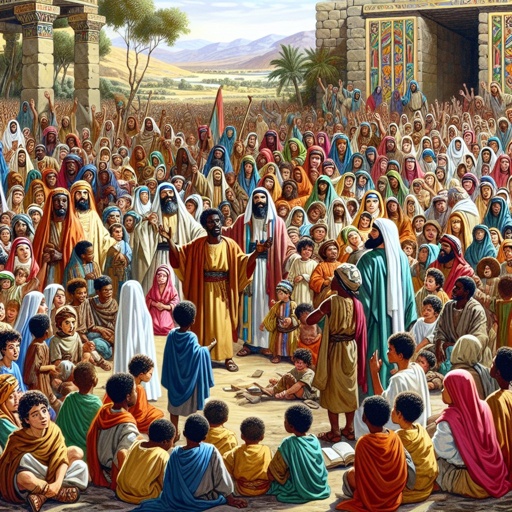Ezra 2 Artwork
"Now these are the children of the province that went up out of the captivity, of those which had been carried away, whom Nebuchadnezzar the king of Babylon had carried away unto Babylon, and came again unto Jerusalem and Judah, every one unto his city;" - Ezra 2:1
Explore Ezra 2 through paintings, pictures, drawings, digital art, illustrations, wallpapers, photos, prints & more.

Ezra 2:20 - "The children of Gibbar, ninety and five."

Ezra 2:24 - "The children of Azmaveth, forty and two."

Ezra 2:54 - "The children of Neziah, the children of Hatipha."

Ezra 2:39 - "The children of Harim, a thousand and seventeen."

Ezra 2:18 - "The children of Jorah, an hundred and twelve."

Ezra 2:22 - "The men of Netophah, fifty and six."

Ezra 2:29 - "The children of Nebo, fifty and two."

Ezra 2:9 - "The children of Zaccai, seven hundred and threescore."

Ezra 2:27 - "The men of Michmas, an hundred twenty and two."

Ezra 2:51 - "The children of Bakbuk, the children of Hakupha, the children of Harhur,"

Ezra 2:32 - "The children of Harim, three hundred and twenty."

Ezra 2:23 - "The men of Anathoth, an hundred twenty and eight."

Ezra 2:16 - "The children of Ater of Hezekiah, ninety and eight."

Ezra 2:30 - "The children of Magbish, an hundred fifty and six."

Ezra 2:37 - "The children of Immer, a thousand fifty and two."

Ezra 7:2 - "The son of Shallum, the son of Zadok, the son of Ahitub,"

Ezra 2:44 - "The children of Keros, the children of Siaha, the children of Padon,"

Ezra 2:56 - "The children of Jaalah, the children of Darkon, the children of Giddel,"

Ezra 2:21 - "The children of Beth-lehem, an hundred twenty and three."

Ezra 2:45 - "The children of Lebanah, the children of Hagabah, the children of Akkub,"

Ezra 2:53 - "The children of Barkos, the children of Sisera, the children of Thamah,"

Ezra 2:11 - "The children of Bebai, six hundred twenty and three."

Ezra 2:48 - "The children of Rezin, the children of Nekoda, the children of Gazzam,"

Ezra 2:15 - "The children of Adin, four hundred fifty and four."

Ezra 2:49 - "The children of Uzza, the children of Paseah, the children of Besai,"

Ezra 2:50 - "The children of Asnah, the children of Mehunim, the children of Nephusim,"

Ezra 2:10 - "The children of Bani, six hundred forty and two."

Ezra 2:41 - "¶ The singers: the children of Asaph, an hundred twenty and eight."

Ezra 2:46 - "The children of Hagab, the children of Shalmai, the children of Hanan,"

Ezra 2:5 - "The children of Arah, seven hundred seventy and five."